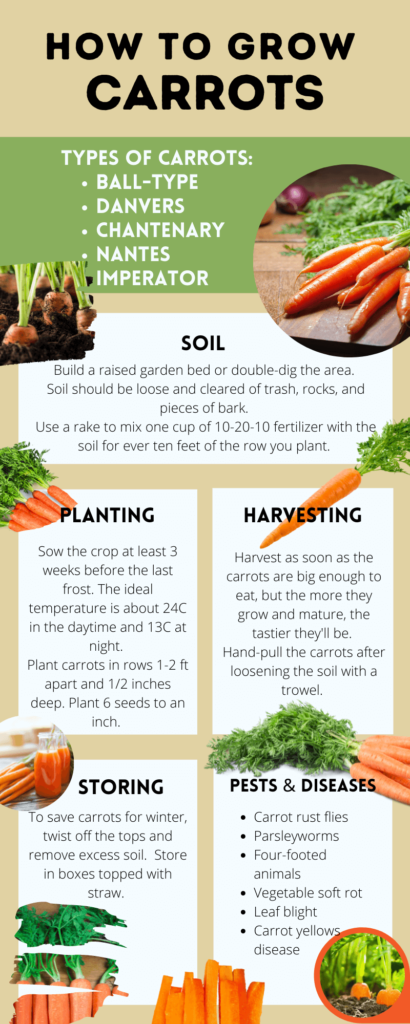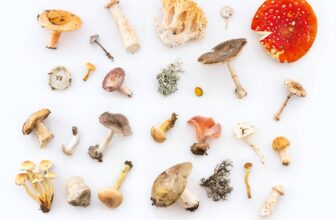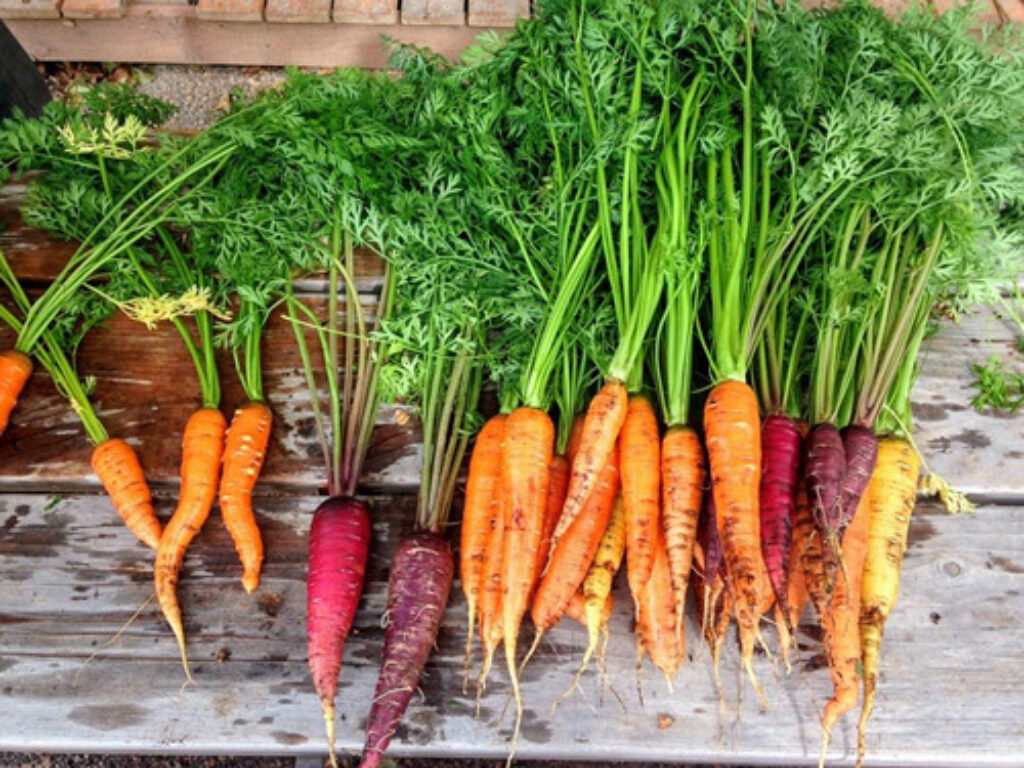
Table of Content
Ever since I first pulled a crunchy, vibrant carrot from the soil of my own garden, I’ve been hooked on growing these nutritious root vegetables. Packed with beta-carotene, fiber, vitamin K, and potassium, they’re as health-boosting as they’re tasty.
The world of carrots extends far beyond the typical orange variety – from deep purples to brilliant yellows and even whites, there’s a rainbow to explore in your own backyard. Growing carrots has not only added variety to my garden, but also to my plate. If you’re planning on growing your own carrots, here’s what you need to know.
Common Carrot Varieties
When I first decided to plant my own carrots, I was surprised to find out that the humble carrot comes in many varieties, each with its own unique characteristics. Here’s a round-up of some of the different types I’ve explored:
Nantes Carrots
Named after the city of Nantes in France, these carrots are nearly cylindrical, sweet, and crisp. They’ve become a favorite in my garden due to their consistent flavor and resistance to most pests and diseases. They’re perfect for eating raw in salads or just as a quick, healthy snack.
Imperator Carrots
These are the long, tapered carrots you often see in grocery stores. They require deep, sandy soil, so they were a bit of a challenge to grow in my clay-heavy garden. But once I amended my soil, the reward was worth it – sweet, juicy carrots that were perfect for roasting.
Danvers Carrots
Originating from Danvers, Massachusetts, these carrots are shorter and stouter than Imperators. They are a bit more tolerant of heavy soil and are known for their rich, hearty flavor. I’ve found them excellent for juicing and cooking in hearty stews.
Chantenay Carrots
Chantenays are short, conical carrots with broad shoulders, excellent for growing in shallow or rocky soil. They’re incredibly sweet, making them a hit in my household. I’ve used them in everything, from carrot cakes to stews, and they never disappoint.
Ball (or Globe) Carrots
These are small, round carrots, often the size of a golf ball, perfect for growing in heavy or shallow soils. They are sweet and tender and make for a delicious snack. Plus, kids love their unusual shape!
Rainbow Carrots
These aren’t a single variety but a mixture of many. They come in a range of colors, from purple to yellow to white, each with its own subtle flavor differences. Growing these was a colorful adventure, and they added a delightful pop to my meals.
Remember, your climate, soil, and personal taste should dictate which varieties you choose to grow. Experiment with different types to find your favorites – it’s part of the fun of gardening!
When to Plant Carrots
The timing of when to plant carrots can really depend on your local climate and the specific carrot variety you’ve chosen. Let me share some of the general guidelines I’ve learned and used in my own garden:
Spring Planting
In general, carrots grow best in cool weather. That’s why I typically sow my first carrot seeds 2-3 weeks before the last spring frost. But do check the seed packet for your particular variety, as there can be differences. For instance, some of the Nantes varieties I’ve grown had specific instructions to start planting as early as 5 weeks before the last frost.
Summer Planting
Don’t think you’ve missed your chance if spring has passed. I’ve had success sowing more carrot seeds throughout the summer for a continuous harvest. This is especially true for faster-maturing types like Nantes and Ball carrots.
Fall Planting
If you live in a milder climate, you can plant carrots in late summer or early fall for a winter harvest. I found this works best with hardier varieties, like Chantenay or Danvers.
Year-Round Planting
If you’re lucky enough to live in a climate with mild winters and cool summers, you can potentially grow carrots year-round! It’s been a delight to have fresh carrots from the garden no matter the season.
Carrots generally prefer cooler weather, so avoid planting when it’s really hot, as the seeds may not germinate. I’ve found that monitoring soil temperature is useful. Carrots usually germinate best at soil temperatures between 50 and 85 degrees Fahrenheit.
Most importantly, don’t be discouraged if your first attempt doesn’t go as planned. Gardening is a continual learning experience – I’ve certainly had my share of trial and error!
Preparing the Soil

When I first started gardening, I quickly learned that carrots can be a bit finicky about soil conditions. But don’t worry – with some preparation, you can create the ideal bed for your carrot seeds. Here’s what I’ve discovered works best:
Soil Type
Carrots prefer light, well-draining soil. Heavy clay soils are a challenge, as they can cause carrots to become stunted or misshapen. After struggling with lumpy carrots in my clayey garden, I started to amend my soil with organic matter and sand, which significantly improved my carrot crops.
Soil Texture
You want a fine, crumbly soil texture – often called ‘friable’. Rocks, clumps, or even hard bits of soil can obstruct the growth of the carrots and result in those funny forked or twisted shapes. I’ve found it worthwhile to sift my soil before planting to remove any obstructions.
Soil pH
Carrots favor a slightly acidic to neutral pH, around 6.0 to 7.0. I use a simple soil testing kit to check the pH and add amendments like lime (to raise pH) or sulfur (to lower pH) as needed.
Adding Compost or Fertilizers
Compost is your friend when it comes to growing carrots. I usually work in a layer of well-rotted compost into the top few inches of my garden bed before planting. This not only improves soil structure and drainage but also provides nutrients for the carrots. However, be careful with nitrogen-rich fertilizers – too much can lead to ‘hairy’ carrots with lots of tiny roots.
Preparing the Bed
Lastly, create a smooth, level surface on your garden bed. I use a rake for this. Then, make shallow rows about 2 inches apart. It was a lesson learned the hard way when my first batch of carrots was overcrowded due to lack of space!
How to Plant Carrots

Planting carrots can be a bit of an art, but once you’ve got the hang of it, it’s a process you’ll likely enjoy as much as I do. Here’s a step-by-step guide on how to plant carrot seeds:
Depth and Spacing
Carrot seeds are quite small and should only be sown about 1/4 inch deep. For spacing, I typically aim to sow seeds about 1 to 2 inches apart in rows that are spaced about a foot apart. When I first started, I had a habit of sowing seeds too closely, which led to overcrowding and smaller carrots.
Sowing Directly
Unlike some veggies, carrots don’t transplant well because disrupting their root growth can lead to deformities. That’s why I always sow my carrot seeds directly into the garden bed. I once tried starting carrots indoors, but moving them to the garden didn’t work out well – lesson learned!
Planting Process
After making sure my soil is well-prepared (soft, loose, and free of debris), I create shallow furrows along my garden bed using the edge of a trowel or even my hand. I then sprinkle the carrot seeds along the furrows and gently cover them with a thin layer of soil or compost.
Watering
Just like us, carrots need the right amount of water at different stages of their life. Seedlings need consistent moisture, so I often water daily if the weather is dry. Once established, I reduce watering to about an inch per week. Remember, too much water can lead to carrot root rot, something I learned after losing a batch to overly soggy soil.
Thinning
In a couple of weeks, you should see the seedlings starting to sprout. Once they’re about 2 inches tall, it’s time to thin them out. This is a step I used to skip, and the result was a lot of underdeveloped carrots. Nowadays, I make sure to thin my seedlings to about 1-2 inches apart to give them enough room to grow.
Weeding and Mulching
Regular weeding is crucial. Weeds compete with your carrots for resources. Mulching around the plants helps suppress weeds and keeps the soil moist. Using organic mulch also had the bonus of adding nutrients back into my garden as it decomposed.
Protecting Your Carrot Crop
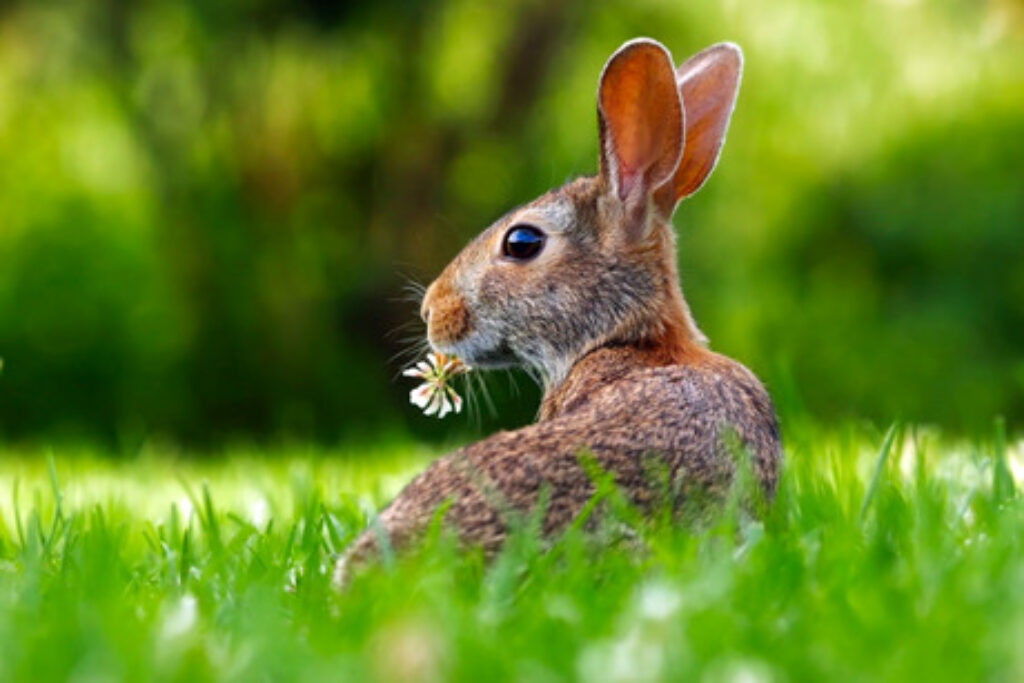
Growing carrots can be quite complicated but that’s actually not the tough part. The hardest part of growing any type of crop is protecting it from threats such as insects, animals and infestations. Here’s a brief list of some of the most common threats to carrot crops and what you can do about them.
Carrot Rust Flies
Carrot rust flies, which look similar to small green houseflies with red eyes and yellow heads, are insects that can ruin your crop. They can infest your crops usually in the early spring so what you can do is delay the planting until early in the summer when there’s like to be less damage. Some gardeners plant chives next to the carrots since chives have a strong scent that masks the sweet smell of the carrots to which the flies are attracted.
Parsleyworms
Another pest you need to keep an eye out for is the Parsleyworm. These worms are green caterpillars with white or yellow dots, black stripes, and tiny orange horns. They love to feed on carrot foliage but don’t kill them because they’re actually black swallowtail butterflies in their larval stage. Transfer these worms to carrot-family weeds like Queen Anne’s lace and you’ll have gorgeous butterflies in your garden soon!
Four-Footed Animals
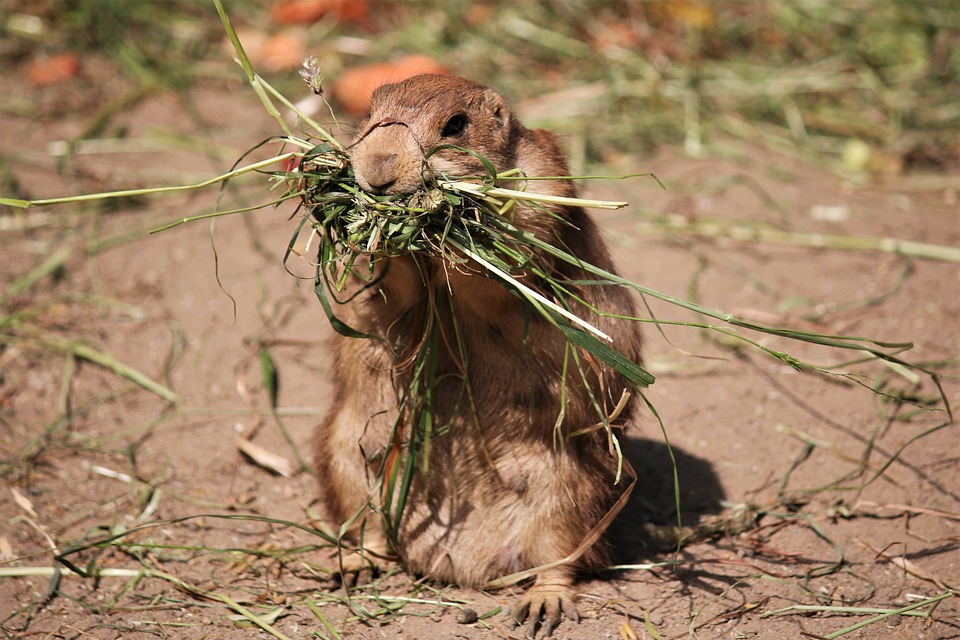
Four-footed animals like deer, woodchucks and rabbits are the biggest threats to your carrots so you’ll want to keep an eye out for them. To protect your plants from them, you can put up a wire fence around your bed to protect your crop.
Vegetable Soft Rot
If you live in an area where the weather is hot and humid, your crops are prone to a bacterial disease that’s called ‘vegetable soft rot’. To prevent this, rotate your crops and keep the soil loose at all times. Don’t store any bruised carrots since the disease spreads in the storage.
Leaf Blight
Leaf blight is one of the most widespread carrot diseases. It begins on the margins of leaves with whitish or yellowish spots that later turn watery and brown. If your crop is suffering from leaf blight, try planting resistant cultivars.
Carrot Yellows Disease
If your carrot plants have pale leaves and formations of hairy root tufts, it could be that they’ve got Carrot yellows disease. This disease is spread widely by leafhoppers so the most effective method you can use to prevent them is by covering the new plantings carefully with row covers to block them out.
Harvesting Carrots
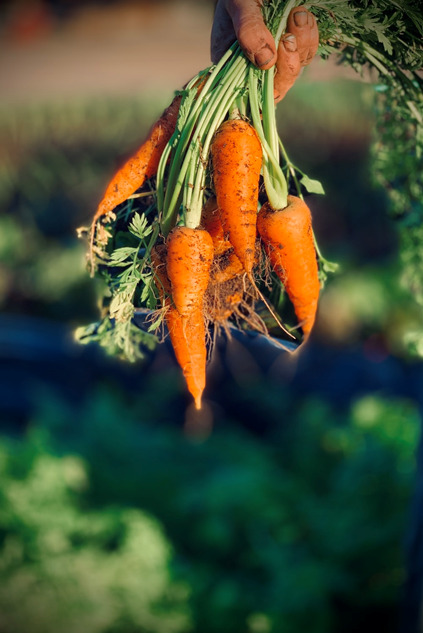
The more carrots grow and mature, the tastier they become. Usually, carrots don’t take long to mature, roughly about 70-80 days but you can harvest them as soon as they’re big enough to eat (when they are finger-sized). If you prefer, you can just leave them all to mature and harvest them at once.
Hand-pulling carrots is the best way to remove them from the soil, since spading forks can bruise their roots. However, before you pull them out, loosen the soil a bit with a trowel. Watering the bed before you start pulling can help soften the soil and make it easier to pull.
Storing Carrots
If you want to save your harvested carrots for use during winter, twist off the tops and remove excess soil. However, don’t wash them as it could result in rotting. Layer the undamaged roots with peat or damp sand in boxes topped with some straw and remember not to let them touch each other. You can also store your crop in the garden by mulching the bed with a few inches of straw or dried leaves.
FAQs about Growing Carrots
Carrots are a cool-weather crop, best planted 2-3 weeks before the last spring frost. In milder climates, you can also plant in late summer or early fall for a winter harvest.
Carrot seeds are small and should be planted shallowly, about 1/4 inch deep.
Aim to sow seeds about 1-2 inches apart in rows that are about 12 inches apart to prevent overcrowding and allow for proper growth.
Carrots prefer full sun but can tolerate partial shade. They need about 6 to 8 hours of sunlight a day.
Carrot seedlings need consistent moisture, so water lightly but regularly. Once established, carrots need about 1 inch of water per week.
This is usually due to obstructions in the soil like rocks or hard clumps of soil, or heavy clay soils. Preparing your soil properly by making it loose and friable can help avoid this problem.
Carrots can be harvested when they are big enough to eat, usually 2-4 months after planting, depending on the variety. You can always pull one out to check its size!
Remove the greens, brush off any excess soil, and store in a cool, humid place like a refrigerator. Carrots can be stored for several weeks or even months under the right conditions. For longer storage, consider freezing, canning, or pickling your carrots.
Wrapping Up
Yes, carrots are extremely fussy vegetables to grow but if you’re willing to commit and make the effort, the result can be very satisfying. There’s nothing like bringing your own, organic carrots fresh from the garden to your table so enjoy the experience and happy planting!
